Explore India
India
India, a land of contrasts and diversity, captivates the senses with its vibrant colors, rich heritage, and kaleidoscopic landscapes. From the majestic peaks of the Himalayas to the sun-drenched shores of its tropical coastline, India offers a tapestry of experiences that leave a lasting impression on all who visit.
Steeped in history and culture, India boasts ancient monuments, sacred temples, and bustling bazaars that narrate tales of bygone eras. The iconic Taj Mahal stands as a testament to love and architectural brilliance, while the bustling streets of Delhi and Mumbai pulse with the energy of modern India.
But India’s allure extends beyond its architectural wonders. Its diverse culinary landscape tantalizes taste buds with a symphony of flavors and spices, while its festivals and celebrations ignite the spirit with color, music, and dance.
Yet amidst the hustle and bustle, India offers moments of tranquility and introspection. Whether seeking solace in the serene backwaters of Kerala or embarking on a spiritual journey along the banks of the Ganges, India invites visitors to discover the depths of their souls.
In every corner of this vast and enigmatic land, India weaves a spellbinding tapestry of sights, sounds, and sensations, leaving travelers enchanted and inspired by its timeless beauty and boundless spirit.
India all-state
India is comprised of 28 states and 8 Union territories. Here is a list of all the states in India.
- Andhra Pradesh
- Arunachal Pradesh
- Assam
- Bihar
- Chhattisgarh
- Goa
- Gujarat
- Haryana
- Himachal Pradesh
- Jharkhand
- Karnataka
- Kerala
- Madhya Pradesh
- Maharashtra
- Manipur
- Meghalaya
- Mizoram
- Nagaland
- Odisha
- Punjab
- Rajasthan
- Sikkim
- Tamil Nadu
- Telangana
- Tripura
- Uttar Pradesh
- Uttarakhand
- West Bengal
And here are the Union territories:
- Andaman and Nicobar Islands
- Chandigarh
- Dadra and Nagar Haveli and Daman and Diu
- Jammu & Kashmir
- Delhi (National Capital Territory of Delhi)
- Puducherry
- Ladakh
- Lakshadweep
These administrative divisions vary in terms of culture, language, geography, and socio-economic factors, contributing to the rich tapestry of diversity that defines India.
History
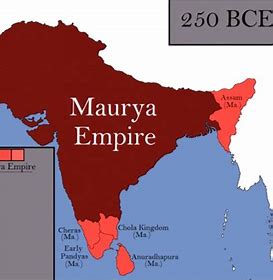
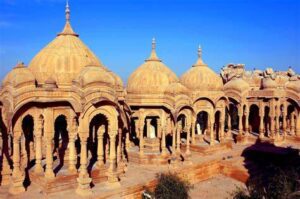
Anatomically, humans were first encountered on the Indian subcontinent about 73,000 to 55,000 years ago. The earliest human remains in South Asia date back to 30,000 years ago. The inception of sectarianism in South Asia was around 7000 BCE, and by 4500 B CE, the Indus Valley Civilisation emerged and thrived between 2500 and 1900 BC in Pakistan and north-western India. The Indus Valley’s population shifted to rural areas in the early second millennium BCE, as a result of prolonged drought. The Punjab saw multiple migrations of Indo-Aryan tribes from Central Asia. Their hymns (Vedas) were composed during the Vedic Period (1500–500 BCE). The varna system was instrumental in the establishment of social hierarchies, and it remains highly developed even today. Indo-Aryans, who were pastoral and nomadic, extended their presence from the Punjab to the Gangetic plain. Around 600 BCE, a novel interregional culture emerged and larger states (mahajanapadas) were formed from small chieftaincies (janpanas). Jainism and Buddhism, along with new ascetic movements and religious beliefs, triggered a second urbanization. Hinduism emerged from the amalgamation of religious cultures that already existed in the subcontinent.
Chandragupta Maurya’s cultural influence in India was evident during the fall of the Nanda Empire and the establishment of a new empire, the Maurya Empire, which is considered the first great empire in ancient India. Pushyamitra Shunga’s assassination of the emperor Brihadratha in 1818 resulted in the collapse of Maurya rule in 185 BCE. In the north and northeast of the subcontinent, Shunga would establish the Sunga Empire, while the Greco-Bactrian Kingdom would expand to cover the northwest and create the Indo-Greek Kingdom. During the 4th to 6th centuries CE, India was under the rule of several dynasties, including the Gupta Empire. The era of the Classical or Golden Age of India was marked by a revival of Hindu religion and intellectual pursuits. Indian civilization, administration, culture, and religion spread to much of Asia, establishing the fertile ground for an Indianised kingdom system in what is today known as Greater India. From the 7th to the 11th century, the Tripartite struggle at Kannauj was the most important event. Several imperial powers rose to power in southern India from the mid-fifth century onwards. In the 11th century, the Chola dynasty took over southern India. Early medieval Indian mathematics, particularly Hindu numerals, had an impact on the development of mathematical and astronomical knowledge in the Arab world, leading to their evolution into the Hindu-Arabic numbers. As early as the 8th century, Islam made limited progress in modern-day Afghanistan and Sindh, with the invasions of Mahmud Ghazni being the next. In 1206 CE, the Delhi Sultanate was established by Central Asian Turks who governed a significant portion of the northern Indian subcontinent. However, this empire’s decline was evident in the late 14th century, and the Deccan sultanates emerged. The Bengal Sultanate, which was wealthy, became a significant power for more than three centuries. The Vijayanagara Empire and Rajput states were among the influential Hindu states that emerged during this period. Sikhism was founded in the 15th century.
The Mughal Empire’s conquest of the Indian subcontinent in the 16th century marked the beginning and proto-industrialization, leading to its rise as the world’s largest economy and leading manufacturing power. The Mughal Empire underwent a gradual decline in the early 18th century, which opened up new territories for the Marathas, Sikhs, Mysoreans, Nizams, and Nawabs of Bengal. The East India Company gradually annexed vast regions of India from the mid-18th to mid-19th century, serving as a dominant force for the British government. The Indian Rebellion of 1857 was a result of the dissatisfaction with company rule in India. The British Crown took over India’s governance and established the British Raj. Mahatma Gandhi spearheaded a nationwide independence movement with the Indian National Congress after World War I. Later, the All-India Muslim League would campaign for a separate Muslim-majority nation-state. The Dominion of India and the Dominion Of Pakistan were formed in August 1947 after the British Indian Empire was partitioned into two separate nations.
Indian culture is a legacy of social and technological values derived from or associated with ethnolinguistically diverse India, which originated in the Indian subcontinent until 1947 and the Republic of India after 1947. This issue also applies beyond India to countries and cultures that have a strong history. connected to India through immigration, rule, or influence, especially in South Asia and Southeast Asia. The language, religion, dance, music, architecture, food, and culture of India differ from one place to another.
Culture of India
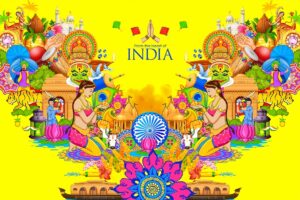
Indian culture, often referred to as a fusion of many cultures, has influenced the history of the past centuries, beginning with the Indus Valley Civilization and other ancient cultural regions. Many things in Indian culture, such as Indian religion, mathematics, philosophy, food, language, dance, music, and film, have had a great impact on the Indosphere, Greater India, and the world. According to Jean Przyluski, there is evidence of regional influence. An Austroasiatic group (Mon Khmer) and some culture and politics of ancient India, who may have arrived with the spread of rice from Southeast Asia. A small ethnic group in eastern India still speaks Austroasiatic languages, mainly Munda languages. The British Raj also influenced Indian culture, particularly through the introduction of the English language and the development of regional dialects.
Spiritual journeys
Spiritual journeys in India are pilgrimages or travels undertaken by individuals seeking spiritual enlightenment, self-discovery, or religious experiences. India, with its rich cultural heritage and deep-rooted spiritual traditions, is a popular destination for such journeys. Here are some key aspects of spiritual journeys in India:
Sacred Sites: India is home to numerous sacred sites, temples, ashrams, and holy cities that attract spiritual seekers from around the world. Places like Varanasi, Rishikesh, Haridwar, Bodh Gaya, Amritsar, and Tiruvannamalai are renowned for their spiritual significance.
Yoga and Meditation: India is the birthplace of yoga and meditation practices. Spiritual seekers often travel to India to immerse themselves in these ancient disciplines, learning from experienced teachers and gurus in ashrams, retreat centers, and yoga schools.
Spiritual Festivals: India celebrates a multitude of festivals that hold deep spiritual significance, such as Diwali, Holi, Navratri, and Kumbh Mela. Participating in these festivals can be a profound spiritual experience, allowing travelers to witness vibrant traditions and connect with the spiritual energy of the country.
Gurus and Spiritual Teachers: India has a long history of spiritual masters, gurus, and saints who have left a profound impact on the spiritual landscape of the country. Many spiritual seekers journey to India to seek guidance from revered teachers and to experience the transformative power of their wisdom.
Ashrams and Retreats: Throughout India, there are numerous ashrams and retreat centers where spiritual seekers can engage in practices like meditation, yoga, chanting, and self-reflection. These serene environments provide an ideal setting for inner exploration and spiritual growth.
Satsangs and Spiritual Discourses: Spiritual gatherings, known as satsangs, are common in India, where seekers come together to chant, meditate, and listen to spiritual discourses. These gatherings offer opportunities for seekers to connect with like-minded individuals and deepen their spiritual practice.
Pilgrimages: India is dotted with pilgrimage sites associated with various religious traditions, including Hinduism, Buddhism, Jainism, Sikhism, and Islam. Pilgrimage journeys to places like the Char Dham (four sacred sites), Vaishno Devi, Kailash Mansarovar, and the Golden Temple are considered spiritually enriching experiences.
Ayurveda and Wellness: India is also renowned for its holistic healing traditions, including Ayurveda, which focuses on balancing the mind, body, and spirit. Spiritual seekers often incorporate Ayurvedic treatments, yoga therapy, and wellness practices into their spiritual journeys for holistic well-being.
Overall, spiritual journeys in India offer seekers the opportunity to explore ancient wisdom, connect with sacred traditions, and embark on a profound inner journey towards spiritual awakening and self-realization.
Top 11 Spiritual destination in India
- Varanasi (Benares)
- Rishikesh
- Bodh Gaya
- Haridwar
- Amritsar
- Tiruvannamalai
- Vrindavan
- Kanyakumari
- Pushkar
- Nainital(Nimkaroli BaBa)
- Ayodhya
Natural Beauty
India is blessed with an abundance of natural beauty, spanning from the majestic Himalayas in the north to the serene backwaters of Kerala in the south. Its diverse landscape encompasses lush forests, pristine beaches, towering mountains, and picturesque valleys, offering a captivating tapestry of scenic wonders.
The Himalayas, with their snow-capped peaks and alpine meadows, stand as the crown jewel of India’s natural beauty. They not only provide breathtaking vistas but also serve as a haven for adventure enthusiasts and spiritual seekers alike.
In the south, Kerala’s backwaters weave through tranquil landscapes of palm-fringed shores, creating a serene and idyllic setting. The state’s lush tea plantations, tranquil lakes, and cascading waterfalls further add to its allure.
India’s coastline is adorned with stunning beaches, such as Goa’s golden sands, Andaman and Nicobar Islands’ pristine shores, and the rugged beauty of Maharashtra’s Konkan coast. These beaches offer opportunities for relaxation, water sports, and unparalleled sunsets.
The country’s national parks and wildlife sanctuaries, including Ranthambore, Kaziranga, and Jim Corbett, are home to a rich diversity of flora and fauna. Here, visitors can witness majestic tigers, elephants, rhinoceroses, and countless bird species in their natural habitats.
From the deserts of Rajasthan to the rolling hills of Himachal Pradesh, from the lush forests of Assam to the emerald-green valleys of Kashmir, India’s natural beauty is as varied as it is awe-inspiring, captivating travelers with its splendor and leaving an indelible mark on their hearts and minds.
Top 11 in Natural Beauty India
- Dudhsagar Falls, Goa
- Hogenakkal Falls
- Bright Marble Gorge, Madhya Pradesh
- Floating island in Loktak Lake, Manipur
- Magnetic Hill, Leh
- Aleya Ghost Light, Sundarbans
- The bright salt deserts of Kutch, Gujarat
- Lonar Meteoric Lake, Maharashtra
- Amarnath Caves, Jammu and Kashmir
- Root Bridges Residence, Meghalaya
- Valley of Flowers, Uttarakhand
Introduction to Cuisine and Culinary Tourism in India
Food tourism, also known as gastronomic tourism, has become increasingly popular in recent years. This includes going to different places to discover the local cuisine and food culture. India is a country with a rich food heritage, making it an ideal destination for food tourism.

Indian cuisine is diverse, and delicious and offers an endless variety of dishes to explore. From spicy street food to the most exquisite cuisine, Indian cuisine has something for everyone. Its geography, history, and different cultures influence the country’s cuisine. Each region has its own unique cuisine and culinary traditions, from the rich, spicy dishes of the north to the light, sweet flavors of the south.
Food tourism in India gives visitors the opportunity. to experience the country’s diverse cuisine, exploring not only the different regions but also the different cuisines. Street food is a big part of Indian cuisine, street vendors sell a variety of delicious and cheap food on almost every street corner. From chaat and samosas to kebabs and biryanis, street food in India offers a unique and delicious dining experience.
Gastronomy is also growing in India, with top chefs creating new dishes that blend traditional Indian flavors with modern techniques. Many of these restaurants not only offer great food but also a unique vision and dining experience.
Traditional flavors and delicacies are another highlight of Indian cuisine. From the famous rasgulla of Bengal to the sweet jalebi of Rajasthan, Indian cuisine is a delight.
India’s diverse food culture makes it an ideal destination for food tourism. Exploring the city’s street food, fine dining, traditional and gourmet food, and local cuisine offers visitors a unique and unforgettable experience. With so much to offer, a food tour in India will satisfy even the discerning foodie.
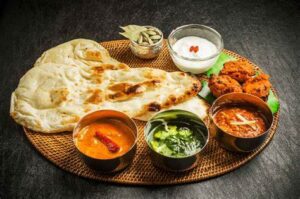
The Rich and Diverse Culinary of India
Indian food culture is as varied and diverse as its geography, history, and people. With over 1.3 billion people in 29 states, each with its own food and culinary traditions, India’s cuisine is vast and complex.
Indian cuisine is strongly influenced by the country’s history and culture. Over the centuries, various empires and dynasties invaded and ruled India, each leaving their mark on food. The Mughals introduced rich, spicy foods like biryanis and kebabs, while the Portuguese brought chilies and potatoes to India, which are now essential in many dishes.
Indian cuisine can be divided into four regions: North, South, East, and West, each with its own unique cuisine and different tastes. North Indian cuisine is known for its rich, creamy curries, tandoori dishes, and breads like naan and parathas. On the other hand, South Indian cuisine is known for its hot, spicy flavors, with dishes like dosas, idlis, and sambhar. East Indian cuisine is heavily influenced by Bengali cuisine and is known for its seafood, sweets, and desserts. The cuisine of West India is Gujarati, Maharashtrian, and Goan cuisine, known for vegetarian dishes, seafood, and spicy curries. Apart from local food, India also has a lot of street food, which is an important part of the country’s food culture. Street food in India offers a wide variety of food that is delicious, cheap, and full of flavor. From the iconic samosas, chaats and bhel puris to kebabs, kathi rolls, and vada pavs, street food in India is a gastronomic adventure that every foodie must experience.
The food culture of India is rich, varied and diverse. From the spicy curries of the north to the fiery dishes of the south, Indian cuisine has something for everyone. The influence of history, culture, and geography has created a unique, delicious, and unforgettable cuisine.
Exploring the Street Food in India
India is famous for its street food, which is an important part of the country’s food culture. Street food in India is diverse, and tasty and offers a unique dining experience. Street food vendors can be found on almost every street corner in India, selling a variety of delicious, affordable, and delicious food.

Chaat is one of the most popular street foods in India. It is a delicious dish that comes in a variety of forms, including aloo chaat (potato chaat), samosa chaat (samosa topped with chutney and yogurt), and dahi bhalla (lentil dumplings in yogurt sauce). The combination of sweet, sour, and spicy flavors makes the chard a favorite among locals and tourists alike.
Kebabs are another popular street food in India. These are fried or grilled meat dishes, usually made on skewers. The most popular types include chicken tikka, seekh kebab, and shami kebab. These skewers are dipped in a mixture of spices and herbs, which gives them a different taste.
Biryani is another popular street food in India. It is a rice dish usually made with meat (chicken, mutton, or beef), spices, and herbs. The rice is cooked with meat and spices, which gives it a special taste. Biryani is usually served with raita (yogurt sauce) and a side salad.
Besides chaat, kebabs, and biryani, there are many other popular street foods in India. Vada Pav is a popular street food in Mumbai, consisting of a potato fritter (vada) sandwiched between two pieces of bread (pav). Pav Bhaji is another popular street food in Mumbai.
This is a delicious vegetable curry made with butter bread. Street food in India is diverse, and tasty and offers a unique dining experience. Chaat, kebabs, biryani, vada pav, and pav bhaji are a few examples of the many delicious street foods found in India. Foodies from all over the world flock to India to experience the incredible street food culture.
Traditional sancks and Sweet.
India is a variety of cities that have learned a special spectrometer that gives a special gesture. These restaurants have the best food by combining fatigues that have a common traditional and related file, and they also make food lovers around the world.
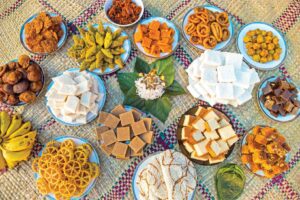
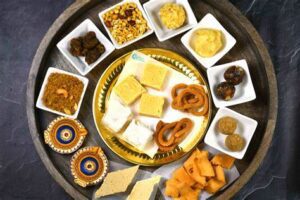
One of the best restaurants in India is Indian Accent, located in New Delhi. It serves modern and traditional Indian cuisine and is included in the list of 50 best restaurants in Asia. The restaurant serves dishes like soy keema, tandoori pork, and duck church with roomali roti.
Bukhara is another famous hotel in India, located in the ITC Maurya Hotel in New Delhi. It serves authentic North Indian food and is famous for its signature dish, Bukhara dal, a black lentil stew slowly cooked over a charcoal fire for over 18 hours. The restaurant has been recognized as one of the best Indian restaurants in the world. Apart from Indian Accent in Bukhara, there are many other fine restaurants in India that offer unique dining experiences. Gaggan in Bangkok, Thailand, is a restaurant owned by Indian chef Gaggan Anand, who has been named Asia’s best chef several times. The restaurant offers a 25-course menu that combines Indian flavors with modern techniques.
Another popular restaurant is The Bombay Canteen, located in Mumbai. It serves contemporary and traditional Indian cuisine, using local ingredients to create dishes such as duck khichdi, Goan sausage pao, and tandoori chicken wings.
The best restaurants in India offer a unique dining experience that combines traditional methods with modern innovations. These restaurants showcase the best of Indian cuisine and cater to food lovers from all over the world.
Ellness and Ayurveda
Wellness and Ayurveda in India: A Journey to Holistic Health

India has long been revered as the birthplace of Ayurveda, an ancient system of medicine that emphasizes the interconnectedness of mind, body, and spirit for optimal health and well-being. Today, wellness and Ayurveda in India continue to attract seekers from around the world, offering a holistic approach to health that integrates traditional wisdom with modern practices.
Understanding Ayurveda:
Ayurveda, which translates to “the science of life” in Sanskrit, is more than just a system of medicine; it’s a way of life that dates back over 5,000 years. Central to Ayurvedic philosophy is the belief that each individual is unique and possesses their own distinct constitution, or dosha, made up of the elements of earth, water, fire, air, and ether.
The Three Doshas:
Ayurveda identifies three primary doshas—Vata (air and ether), Pitta (fire and water), and Kapha (earth and water)—each governing different aspects of physical, mental, and emotional health. Imbalances in these doshas are believed to manifest as illness and discomfort, while harmony leads to vitality and well-being.
Holistic Wellness Retreats:
In India, wellness retreats and Ayurvedic resorts offer immersive experiences designed to restore balance and promote healing on all levels. Nestled amidst serene natural surroundings, these retreats provide a tranquil setting for guests to rejuvenate their body, mind, and soul through personalized Ayurvedic treatments, yoga and meditation sessions, nutritious cuisine, and holistic therapies.
Ayurvedic Treatments:
Ayurvedic treatments are tailored to individual needs based on the principles of dosha balancing. These treatments may include Abhyanga (warm oil massage), Shirodhara (pouring of warm oil on the forehead), Panchakarma (detoxification therapies), herbal remedies, and lifestyle recommendations aimed at restoring harmony and vitality.
Yoga and Meditation:
Yoga and meditation are integral components of Ayurveda, supporting physical flexibility, mental clarity, and emotional balance. Many wellness retreats in India offer daily yoga and meditation classes led by experienced instructors, allowing guests to deepen their practice and cultivate inner peace and mindfulness.
Nutritious Ayurvedic Cuisine:
Ayurvedic cuisine emphasizes the importance of eating fresh, seasonal, and locally sourced ingredients that are tailored to individual dosha types. Meals are thoughtfully prepared to balance the doshas and support digestion, vitality, and overall well-being. Guests can savor delicious Ayurvedic dishes infused with aromatic spices, herbs, and healing ingredients that nourish the body and delight the senses.
Cultural Immersion:
Wellness and Ayurveda retreats in India also offer opportunities for cultural immersion, allowing guests to explore the rich heritage and traditions of the country. From visits to ancient temples and sacred sites to cultural performances and cooking demonstrations, these experiences provide a deeper understanding of India’s holistic approach to wellness and the timeless wisdom of Ayurveda.
Wellness and Ayurveda in India offer a transformative journey of self-discovery, healing, and renewal, inviting guests to embark on a path to holistic health and well-being. Whether seeking relaxation, rejuvenation, or spiritual growth, India’s wellness retreats and Ayurvedic resorts provide a sanctuary for nourishing the body, calming the mind, and uplifting the spirit in harmony with nature and ancient wisdom.
Festivals and Cultural Experiences in India
Festivals and Cultural Experiences in India: A Kaleidoscope of Tradition and Celebration

India is a land of vibrant festivals and rich cultural experiences, where age-old traditions come alive in a riot of colors, music, and rituals. From grand religious celebrations to lively folk festivals, the country offers a diverse tapestry of experiences that captivate the senses and showcase its cultural heritage. Here’s a glimpse into some of the most iconic festivals and cultural experiences in India:
Diwali (Festival of Lights): Diwali, also known as Deepavali, is one of India’s most celebrated festivals, symbolizing the triumph of light over darkness and good over evil. Homes and streets are adorned with oil lamps, candles, and colorful decorations, while fireworks light up the night sky. Families come together to exchange gifts, share festive meals, and participate in prayers and rituals.
Holi (Festival of Colors): Holi is a joyous festival that marks the arrival of spring and celebrates love, friendship, and the victory of good over evil. Participants gather in streets and open spaces, splashing each other with colored powders and water, singing and dancing to the beat of drums. Holi is a time for forgiveness and renewal, as people come together to bridge divides and foster harmony.
Navratri and Durga Puja: Navratri, a nine-night festival dedicated to the worship of the Hindu goddess Durga, is celebrated with fervor across India. In the state of Gujarat, it takes the form of vibrant Garba and Dandiya Raas dances, where men and women clad in traditional attire whirl and twirl to rhythmic music. In West Bengal, Durga Puja is a grand affair, with elaborately crafted pandals (temporary temples) showcasing artistic themes and cultural performances.
Ganesh Chaturthi: Ganesh Chaturthi is a ten-day festival honoring the elephant-headed Hindu deity Ganesha, the remover of obstacles. In Maharashtra, elaborate clay idols of Lord Ganesha are installed in homes and pandals, accompanied by devotional songs, processions, and cultural programs. On the final day, the idols are immersed in water bodies amidst chants and cheers, symbolizing the deity’s return to his celestial abode.
Kumbh Mela: The Kumbh Mela is one of the largest religious gatherings in the world, attracting millions of pilgrims to the banks of sacred rivers in India. Held every twelve years in rotating locations, including Prayagraj, Haridwar, Nashik, and Ujjain, the Kumbh Mela is a spectacle of faith, spirituality, and cultural diversity. Pilgrims take ritual baths in the holy waters, seeking spiritual purification and blessings.
Pushkar Camel Fair: The Pushkar Camel Fair is a colorful extravaganza held annually in the desert town of Pushkar, Rajasthan. It is a unique blend of cultural festivities, livestock trading, and traditional competitions, with thousands of camels, horses, and cattle on display. Visitors can witness camel races, folk performances, and Rajasthani music, as well as participate in hot air balloon rides and camel safaris.
Onam: Onam is the harvest festival of Kerala, celebrated with great enthusiasm and traditional fervor. The highlight of Onam is the grand feast, known as Onam Sadhya, which features a delectable spread of vegetarian dishes served on a banana leaf. The festival also includes colorful floral decorations, boat races, cultural programs, and the iconic Pulikali (tiger dance) procession.
Rath Yatra: The Rath Yatra, or Chariot Festival, is a grand procession dedicated to Lord Jagannath in the city of Puri, Odisha. Huge chariots carrying idols of Lord Jagannath, his brother Balabhadra, and sister Subhadra are pulled through the streets by thousands of devotees. The Rath Yatra attracts pilgrims and tourists from all over the world, who come to witness the spectacle and seek blessings.
Dussehra: Dussehra, also known as Vijayadashami, commemorates the victory of Lord Rama over the demon king Ravana, as recounted in the Hindu epic Ramayana. The festival is celebrated with dramatic reenactments of the Ramayana story, culminating in the burning of effigies of Ravana, Meghnath, and Kumbhakaran. It symbolizes the triumph of righteousness and the defeat of evil forces.
Bihu: Bihu is a set of three cultural festivals celebrated in the Indian state of Assam—Rongali Bihu (spring festival), Bhogali Bihu (harvest festival), and Kongali Bihu (autumn festival). These festivals are characterized by traditional dances, music, feasting, and rituals, reflecting the agrarian way of life and the spirit of community bonding.
These festivals and cultural experiences are just a glimpse into the rich tapestry of traditions and celebrations that define India’s cultural landscape. Each festival offers a unique opportunity to immerse oneself in the country’s diverse heritage, fostering a sense of unity, harmony, and joy among participants and spectators alike.
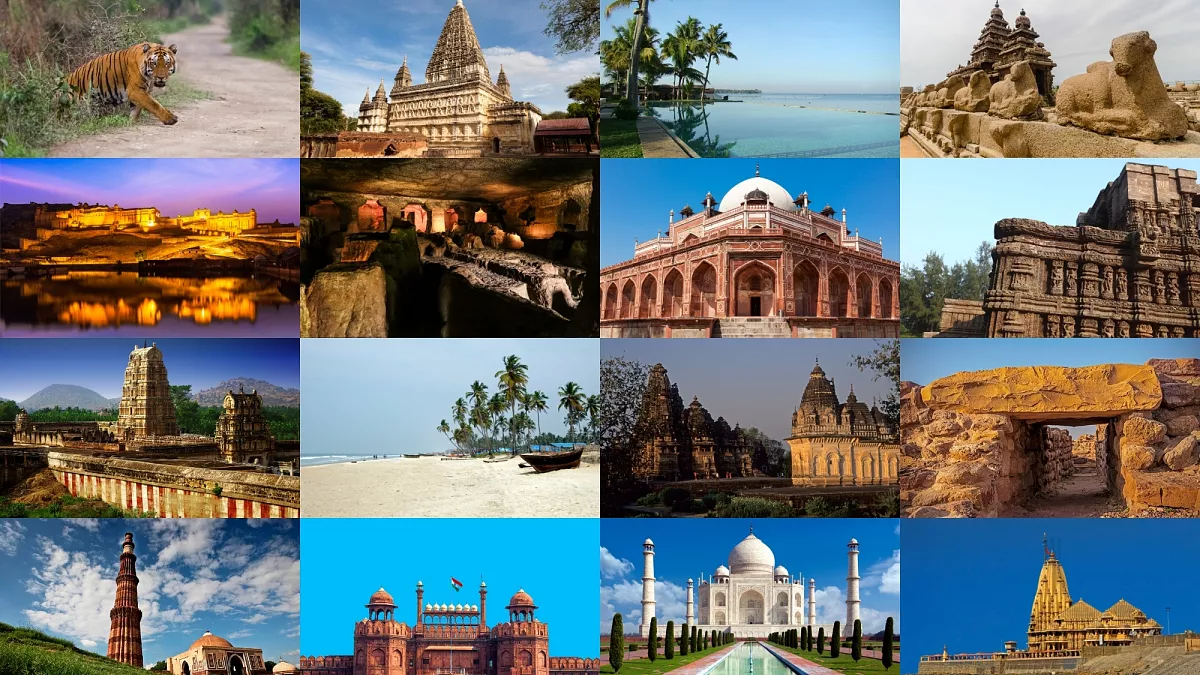
7 thoughts on “Travel to India”